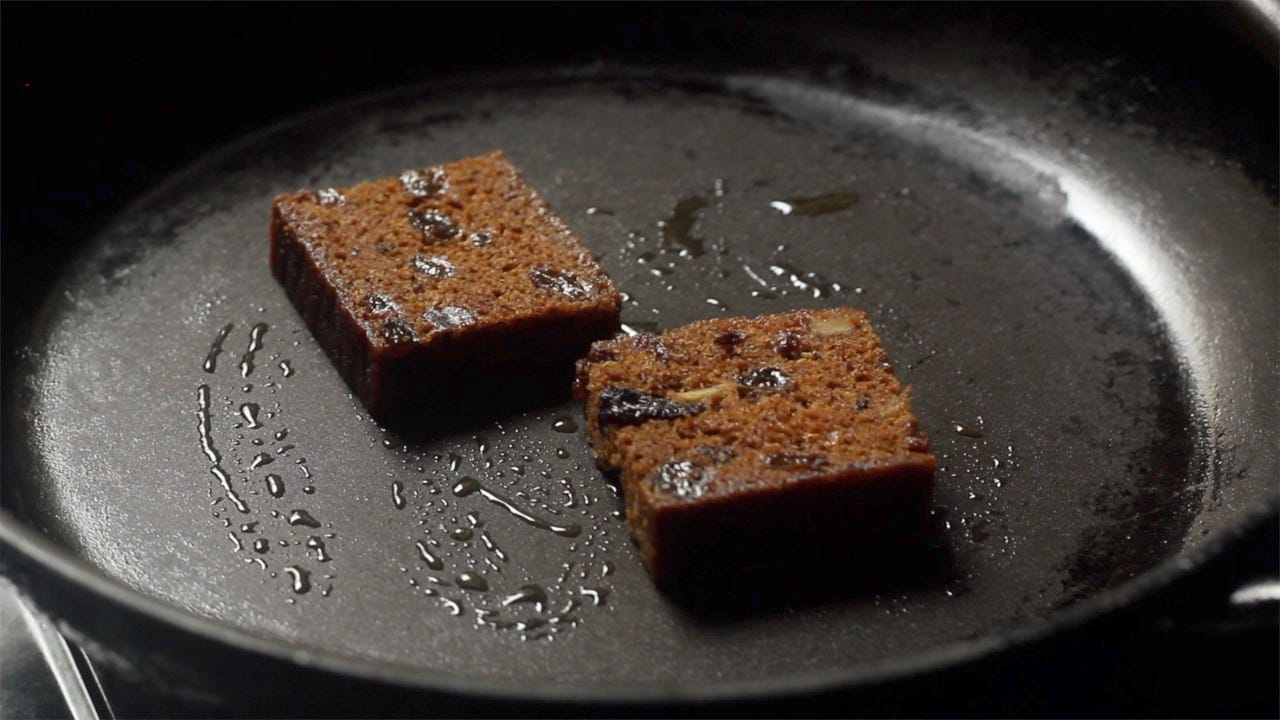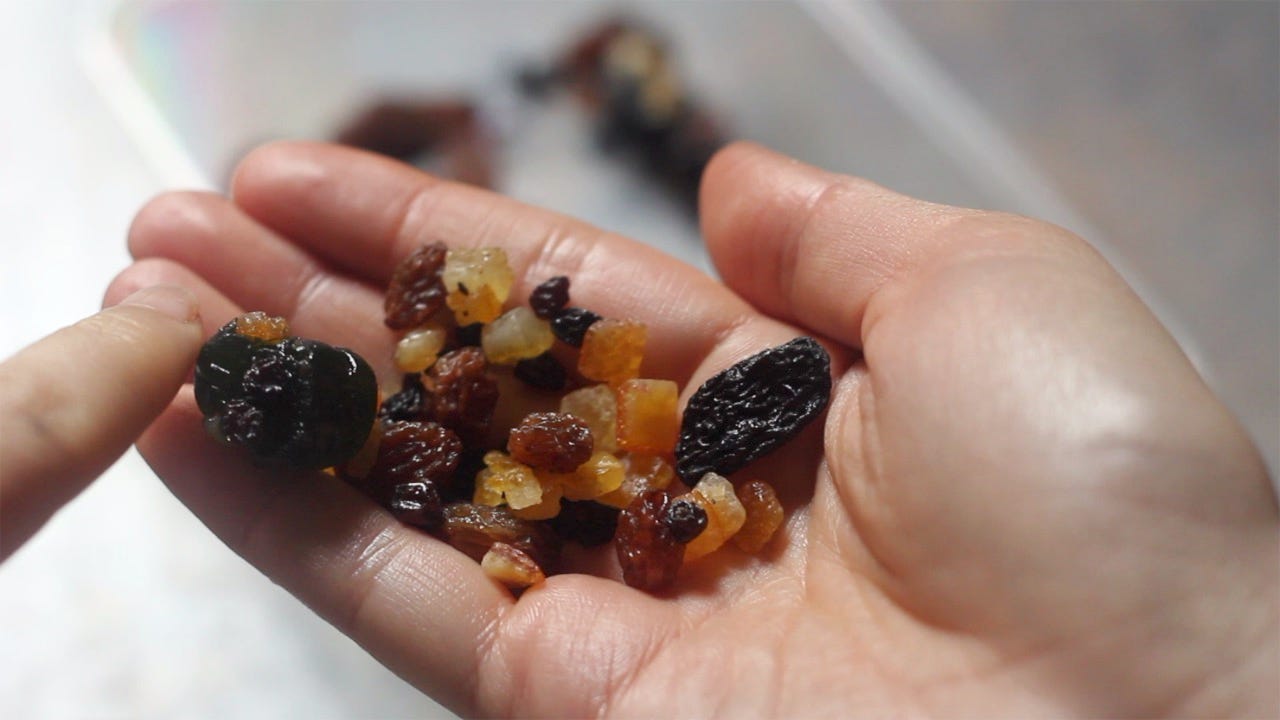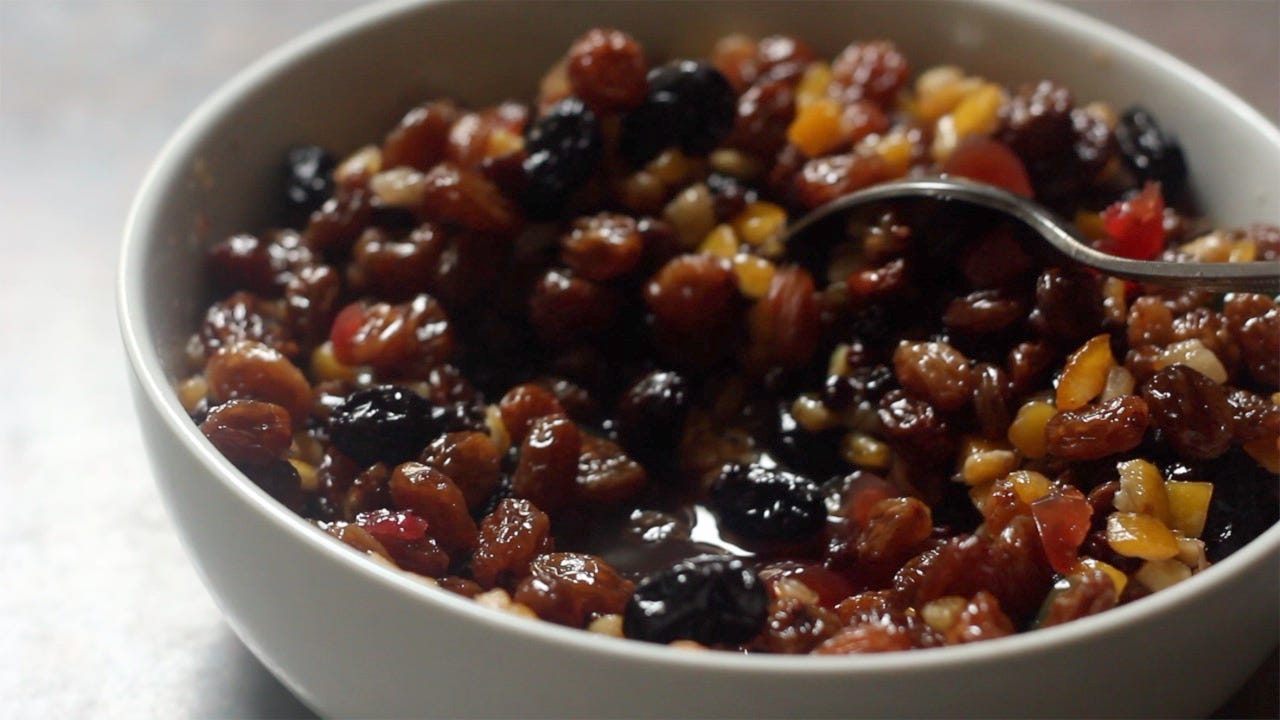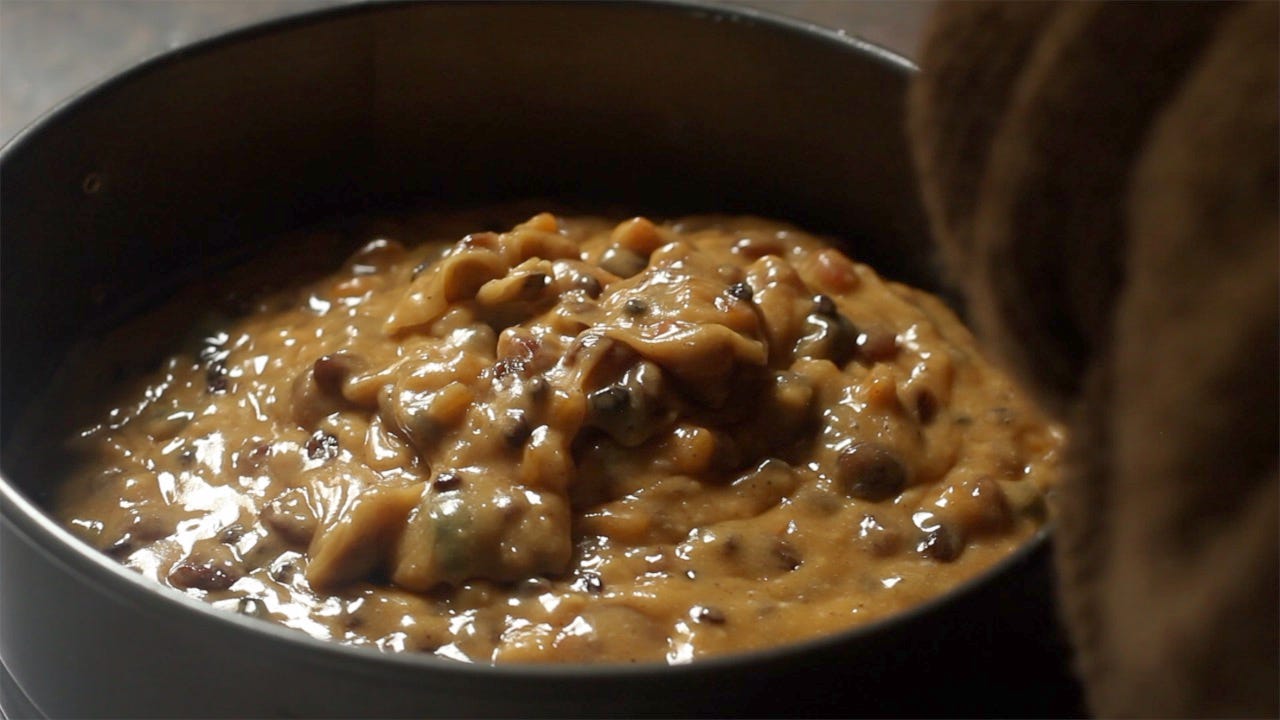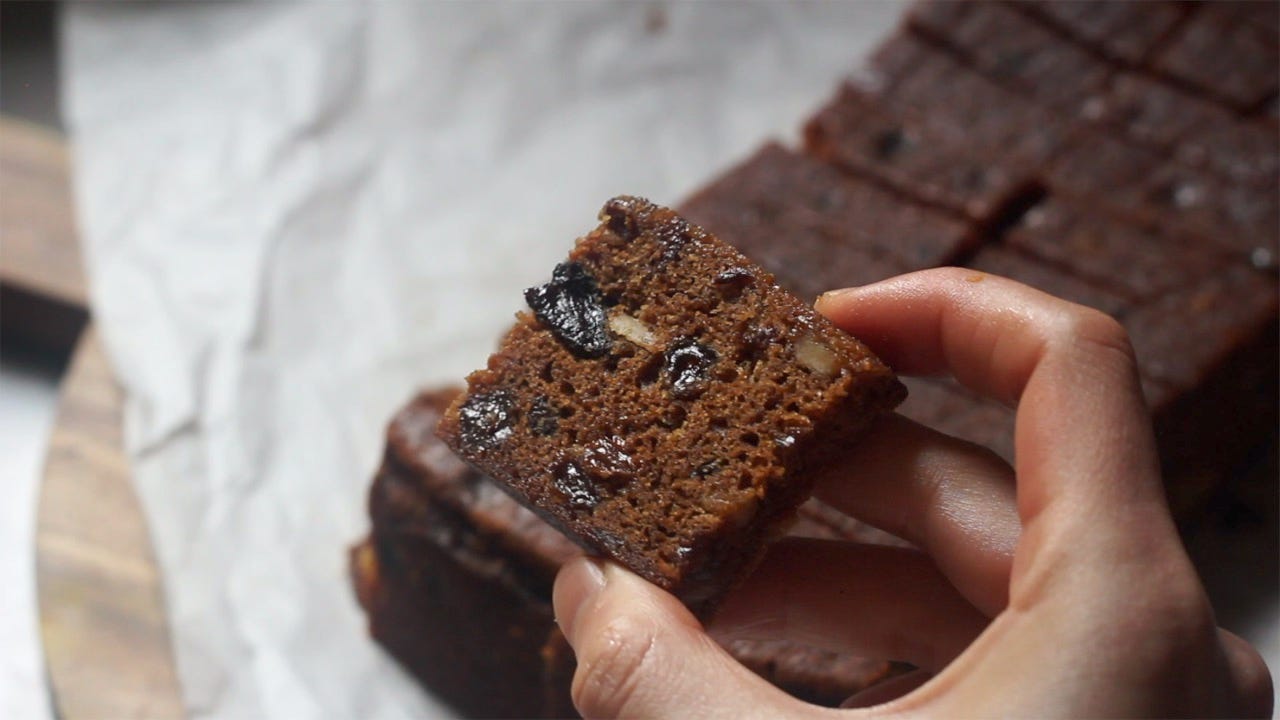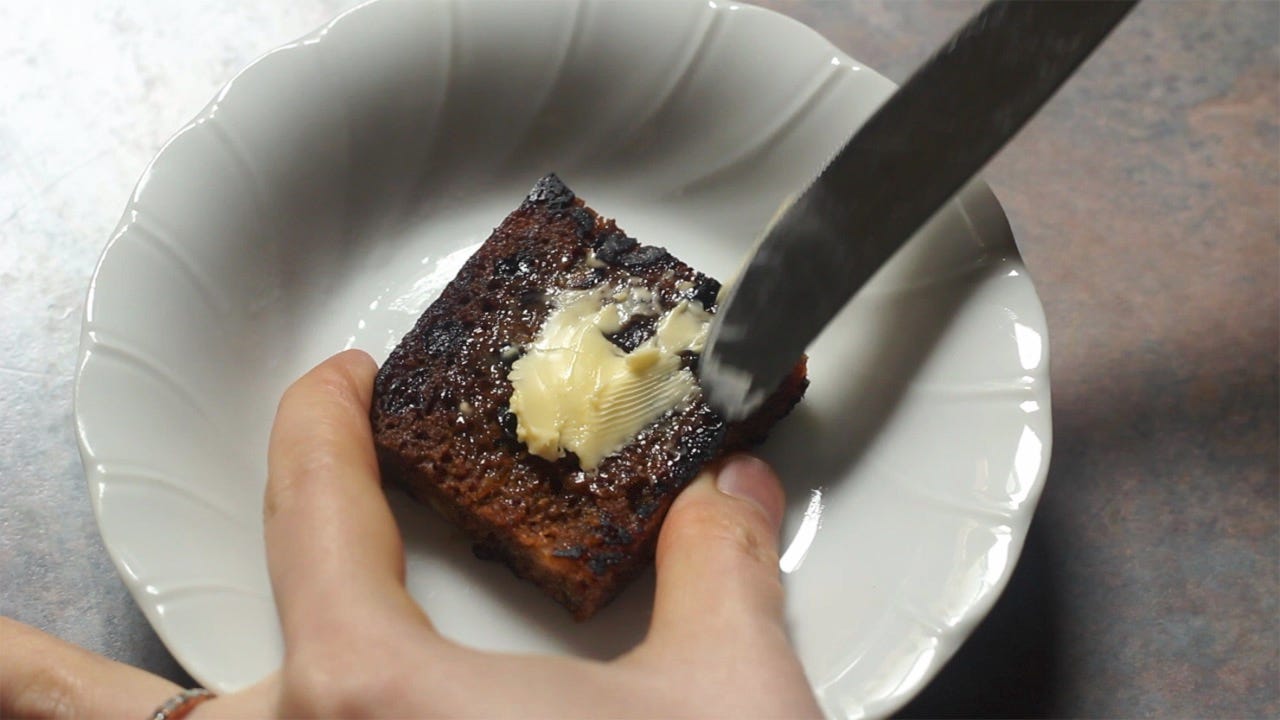On fruitcake
When I was younger, one of the more common doorgifts to receive at a wedding was fruitcake. They were never very good - dry, crumbly, and studded with artificially coloured fruit. I’ve always loved eating dried fruit though! One of my favourite snacks as a kid was raisins, especially the plump ones in a loaf of bread (I would pick them out of the weekly loaf at home), but I never had any inclination to make fruitcake because of those terrible versions that I’ve had.
Earlier this year, I found out about kek kukus buah, literally ‘steamed fruitcake’, which is a traditional Malay snack. Solely in terms of appearance, it stands out from your usual fruitcake, being dark brown and having little air bubbles running through the cake. It was probably created as a riff on British fruitcake (unsurprising given Singapore’s colonial past), but the Malay version has no alcohol and is steamed instead, relying on caramel for deep flavour and colour.
It is popular during Hari Raya Puasa, because the cake keeps for a long time and is suitable for preparing during the fasting month. Musthafa Kaamal of Cemilan Sg says that her family’s recipe for kek kukus buah has been passed down from her grandma to her mother, and now to her sister. “Every year, the kek kukus will be finished first… My mum makes it a must to have at least 2-3 tubs of kek kukus prepared, so that it will be available throughout Raya.”
There are a few tips that I’ve picked up on making a good fruitcake. The first is to use quality dried fruits. You can use any combination of your favourite dried or candied fruits/ vegetables/ citrus peel (interesting ones include dried sweet potato, candied winter melon, candied ginger, dried mango, and dried banana), but the cheapest option is to go for what is labelled ‘mixed fruits’. I am lucky that I live in a town that is fairly European in sensibility and the local grocer has none of that horrible syrupy/ artificially coloured stuff. Get the best mixed fruits you can find!
Next, rehydrate the dried fruits - any liquid will do. I chose to use whiskey because it’s the holidays, but you can use black tea or orange juice. Soaked dried fruits not only have better flavour, they also will not absorb moisture from the batter, which could potentially lead to a dry cake. Dried fruits can take a long time to fully absorb the liquid - some bakers would soak their dried fruits for stollen, fruitcake, or mince pies months in advance. On the other hand, I have also seen kek kukus recipes that do not involve any soaking of the dried fruits! I chose to do a one-day soak, and any unabsorbed alcohol was reserved for brushing the cake later on.
Being steamed rather than baked, the cake relies on caramel for colour and flavour. Cooking the caramel up to the right point is a key step. Too light and the cake won’t have its characteristic depth of flavour, too dark and the cake might taste bitter. When the caramel is the colour of amber, I add butter in huge chunks to cool it down rapidly.
The rest of the cake comes together fairly quickly. When the butter has melted, the hydrated fruits go in and the mixture is allowed to cool before eggs and the dry mixture is added. Spices are pretty common in fruitcake and Musthafa says that nutmeg is a must. “My mum adds a touch of nutmeg into her recipe that is lacking in other kek kukus that I’ve tried. To me, without nutmeg, kek kukus is not kek kukus.”
I opt for a homemade spice mix from making kueh lapis legit earlier this year. It is my very favourite to use in desserts, being a blend of cinnamon, nutmeg, cloves, and cardamom.
This cake gets its massive lift from the eggs and the reaction between the caramel and baking soda. Hence, it is important to only half fill your pan, and cover with foil or with a plate to avoid condensation from falling onto the cake. The steaming is really the hardest part. It takes about 3 hours on high heat - you have to check on the water constantly and top it up with boiling water. But the results are worth it because steaming gives this cake the loveliest texture - moist, spongy and slightly chewy, like ma lai gou (the classic Malay steamed cake that is so popular at so many dim sum parlours).
The steamed cake is traditionally served as is, but I brushed mine with the leftover whiskey from soaking the fruits. The alcohol acts as a preservative and allows you to keep fruitcake for longer. I’ve read a story on Reddit about how, following the passing of someone’s grandmother, her family found several fruitcakes stored in biscuit tins baked a year before, almost as if she was nourishing her family even after she had gone. Whether or not you choose to ‘feed’ your cake with alcohol, it is best to age it for at least 2 days for best flavour and texture.
This cake is very rich, and it is best to serve it in small slices. This is an expensive cake to make too, in terms of cost, labour, and time involved, so small slices help you appreciate it more!
To refresh, I fry it in a pan with a little ghee until both sides are slightly crunchy and caramelized. Slather on more butter while the slices are hot. I learnt this trick from a cafe in Melbourne which prepares its banana cake in this way and it’s just the best. The combination of hot toasted cake and butter is such a perfect treat to have in the morning which will make any day feel like Christmas.
Kek Kukus
Makes a 9-10” pan




